The F1-powered Porsche 911 with Stefan Johansson paintwork
Worlds collided for F1 veteran and artist Stefan Johansson when he was asked to design the livery of a special Porsche powered by one of his old McLaren engines. Damien Smith tags along
Imagine the pitch. Take an early 1980s Porsche 930. Stick a TAG turbo Formula 1 engine in the back – not
a replica, a real one, straight out of a McLaren grand prix car of 1983-87 vintage, with genuine race history. Add the requisite styling cues, such as a period F1 steering wheel and Hugo Boss-labelled safety belts. Then hand it over to a McLaren F1 driver of that specific era, who also just happens to be an artist, and give him free rein to express himself with a bespoke paint job. It’s a ‘yes’ every time, isn’t it?
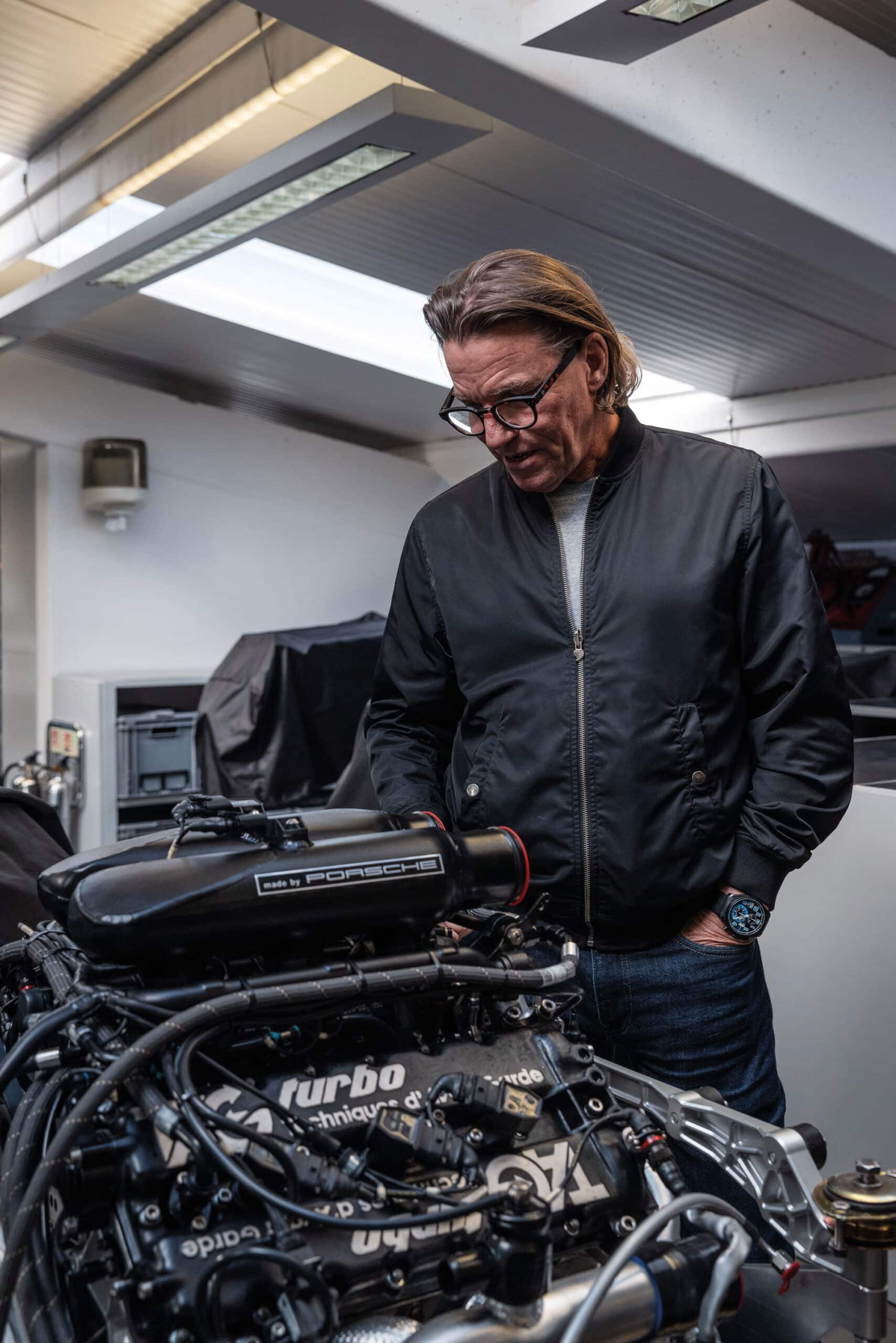
Stefan Johansson revealed ‘his’ Porsche 930 TAG Turbo at the Goodwood Festival of Speed, complete with a spin up the hill. We say ‘his’. It’s not literally. But it is powered by one of Johansson’s race engines from his single season with McLaren in 1987, and the Swede did indeed hand-paint the livery. Conceived and built by historic racing and exotic hypercar specialist Lanzante, the project is quirky – much like Johansson – and a delightful example of motor sport’s great Art Car tradition. Some can be sniffy about the ‘Restomod’ label, but if that’s how we describe it for want of a better word, it’s an example of the breed that’s turned up all the way to 11 – which happens to be the number that have been built.
“Obviously I was intrigued, fascinated and curious to find out more,” says Johansson, recalling his initial response to the 930 TAG Turbo. “It’s a great project, very cool. In the concept of these retromods it’s an interesting angle.”
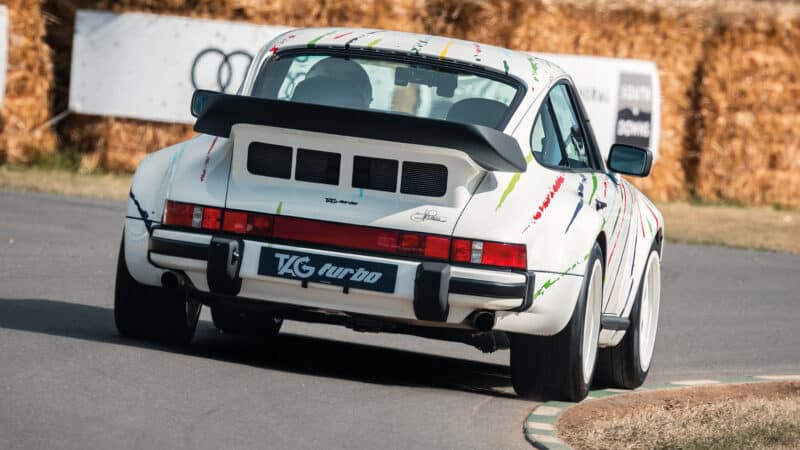
Johansson runs the 930 up the hill at this year’s Goodwood FoS
Dean Lanzante runs his innovative operation from an elegant base in Petersfield, Hampshire. He explains the genesis of a project inspired by the original test ‘mule’ Porsche used as it developed Hans Mezger’s 1.5-litre V6 turbo that, badged as a TAG, would claim three consecutive drivers’ titles – Niki Lauda in 1984, Alain Prost in ’85 and ’86 – plus a pair of constructors’ crowns for McLaren. Zak Brown wouldn’t sell Lanzante the original 930 mule, but during a visit to the company’s Woking lair Dean spotted an opportunity. “I’d seen all these old engines in crates,” says the son of Lanzante founder, Paul. “They’d kept a batch to future-proof their TAG F1 cars. But they had a lot of engines and this is a good use for some that were just hanging around, that represents Porsche’s most successful period in F1.”
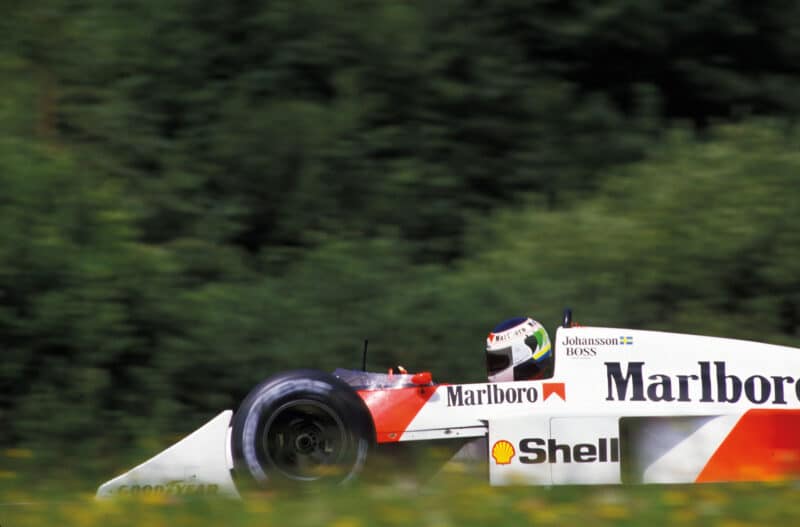
TAG Porsche engine is the one he raced in the 1987 Austrian Grand Prix.
So five seasons plus two McLaren drivers per year equals… 10 cars. So why the odd number? John Watson made a one-off return at the 1985 European GP at Brands Hatch, subbing for Niki Lauda who had injured his wrist in a practice crash at Spa – hence 11 engines and 11 930 TAG Turbos. The key is all the V6s have pukka race histories. “They are original F1 race engines, complete with certificates for each with details of who drove them and where,” says Lanzante. “We are doing 11 based on the original mule, each named after the driver who raced it that specific year. So you have NL83 for Niki Lauda in 1983, JW83 for John Watson in 1983 and so on, going all the way up to SJ87 for Stefan Johansson in 1987. The Alain Prost 1984 car has his Monaco-winning engine.”
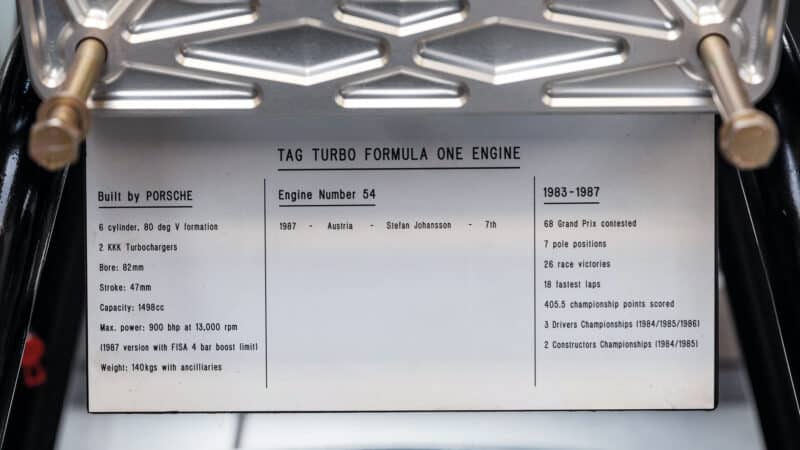
The engines came from McLaren’s heritage collection and each is complete with an intricate history file
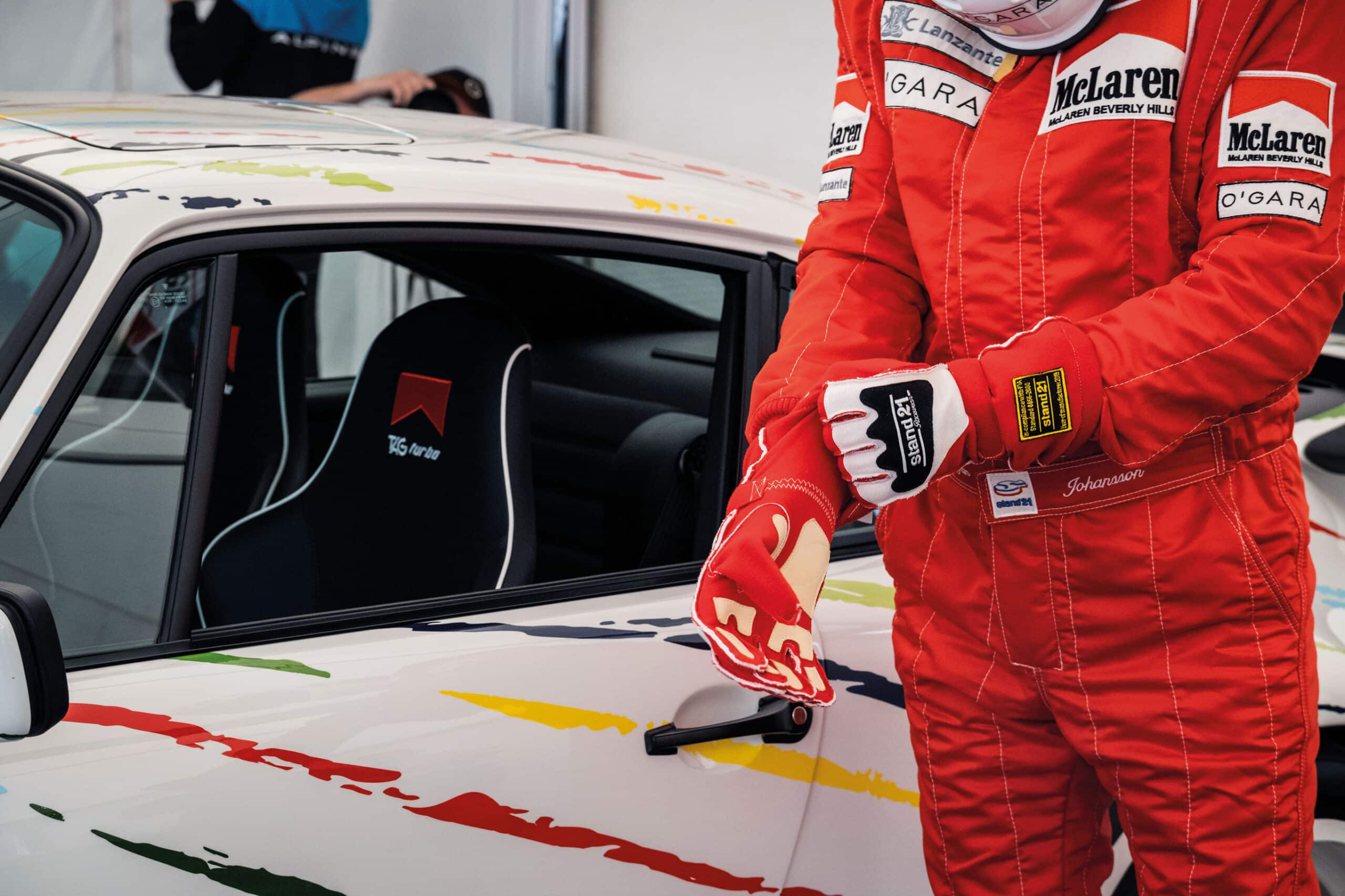
Back in the day, Cosworth would surely have loved to get a closer look at one of the V6s that was helping make its venerable DFV obsolete. Now it has… It was Cosworth Lanzante called upon to recondition the engines for road use. “This is an engine that was built for the life of a grand prix and now we’ve got it in a turnkey road car,” says Lanzante of an engine detuned to 503bhp. “They have reduced power due to running regular fuel, lower boost and lower rpm – they ran at 11,500rpm, now they run at 9000. Along with the 11, we are doing three additional cars to celebrate the three TAG McLaren world championships. These are stripped-out versions with a shorter engine life, a lot more power and a lot less weight.”
“I totalled the primary car after hitting a deer in free practice”
The V6 in SJ87 is an engine Johansson ran at the 1987 Austrian Grand Prix. “It wasn’t exactly the most stellar of results, but we’ll forget about that!” chuckles the 66-year-old Swede. “It was memorable, but not for the best reasons. I totalled the primary car after hitting a deer in free practice, so the team had to build me a new car for qualifying. We were compromised for the whole weekend from there, and then in the race, I lost a wheel after a pitstop, so had to limp back to the pits and finished out of the points. However, the engine itself was probably the strongest part of the whole package we had that year. It already had great heritage, with several titles under its belt, and it was the last year of development when I ran it in 1987. It was fantastic in terms of driveability, and the electronics were developing extremely quickly at that stage.”
So what was his approach to the paint job? “We jointly decided to use this sort of abstract style I’ve been using which I call ‘Memories of a past life’, named after corners and different section of grand prix tracks from around the world,” Johansson explains. “So we did an artwork based around that and played with how best to make it work.”
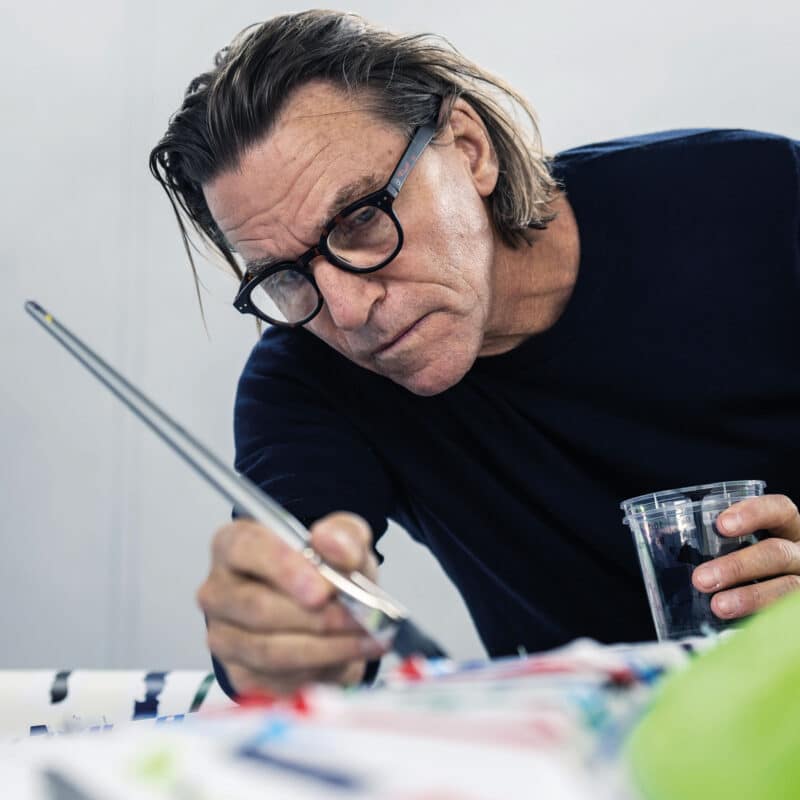
The paint was hand-applied to the Porsche, and even extends to some snazzy matching seatbacks
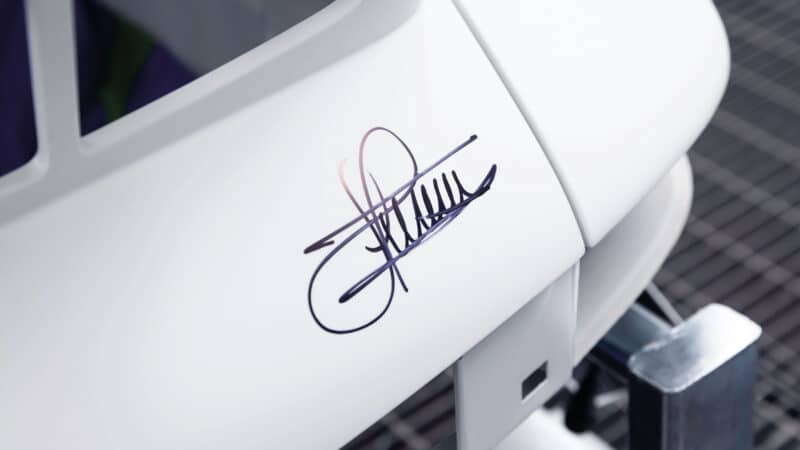
Johansson adds the finishing touch to SJ87
The colour palette clearly draws on McLaren’s Marlboro-sponsored heyday, with the green shades lifted from Johansson’s signature helmet – inspired in turn by the nickname his father gave him: Little Leaf. A traditional wrap would have been the obvious choice, but this being Johansson and Lanzante, they found their own way. “Once we’d sketched it out and played around with different options of where to start, we found the centre point of the art and how it spreads around the car so it looks coherent from every angle,” says Johansson. “The paint was applied directly on to the car with brushes.” Lanzante has vast experience of bespoke paint jobs for its supercar and hypercar clients. “They came up with the paint mixture – a really nice creamy paint, not too thin,” says Johansson. “It was really nice to apply it. I’m keen to use it on my canvases because it worked really well.”

Each of the 930 TAG Turbos carries a unique colour scheme commissioned to the tastes of individual owners. But the SJ87 will stand out again, thanks to Johansson’s personal touch. Cars created as an art form? The premise has never been so apt.
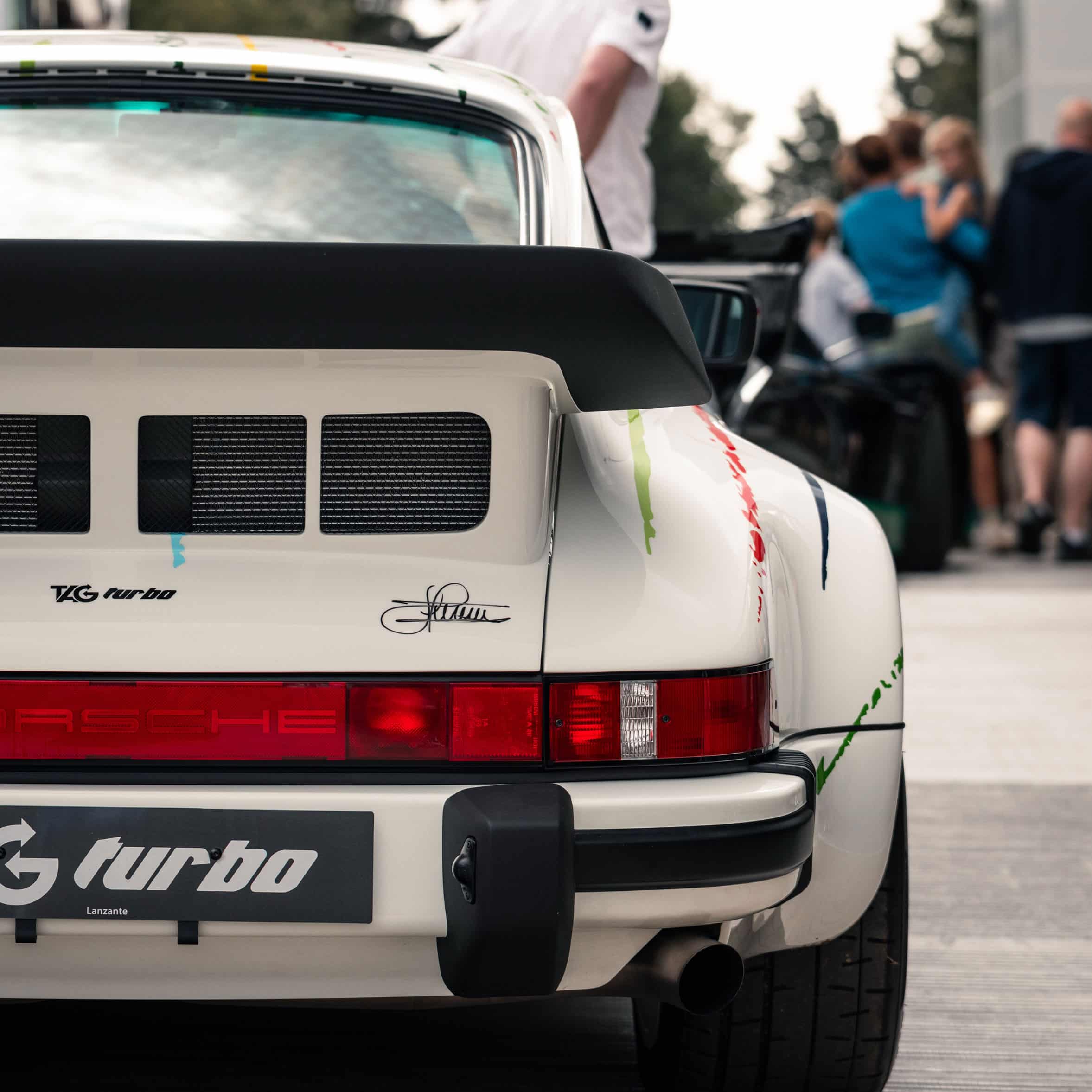
930 TAG TURBO SJ87
Engine TAG TTE P01 1.5-litre V6 twin turbo
Race activity 1987 Austrian GP (7th)
Power 503bhp
Transmission Porsche 993 six-speed gearbox with bespoke ratios
Electronics Cosworth ECU, Raychem Formula 1 wiring loom
Chassis Porsche 930 Turbo with bespoke rollcage
Suspension Öhlins four-way adjustable dampers
Brakes Four-pot calipers with carbon ceramic discs, 330mm front/330mm rear
Fuel tank Motor sport bag tank, 70 litres
Lighting New lighting throughout, including LED headlamps
Weight 1020kg, not including fuel and driver
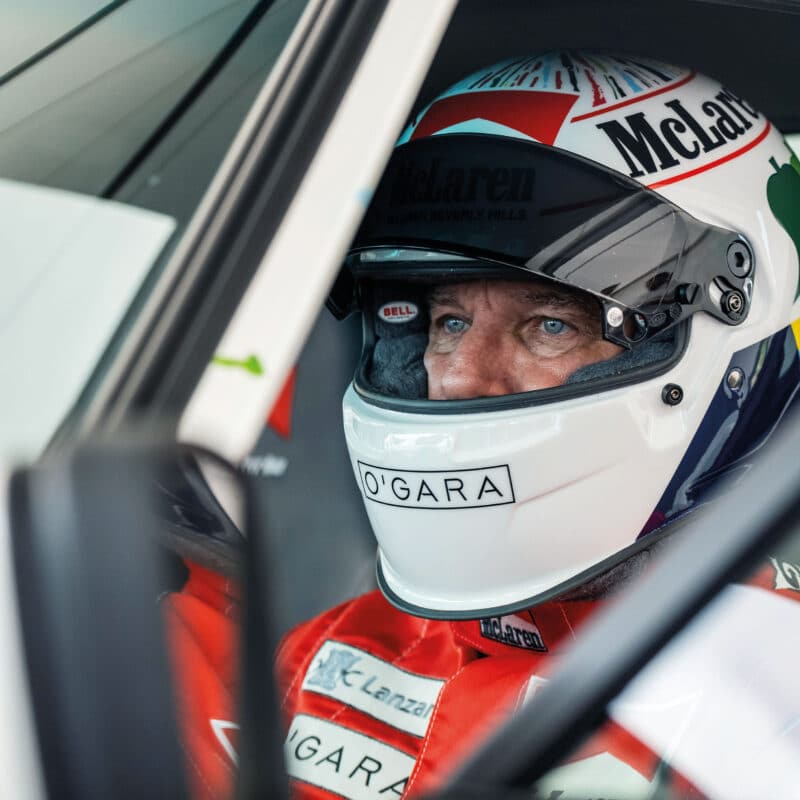
Johansson even decorated his personal crash helmet to match the Porsche